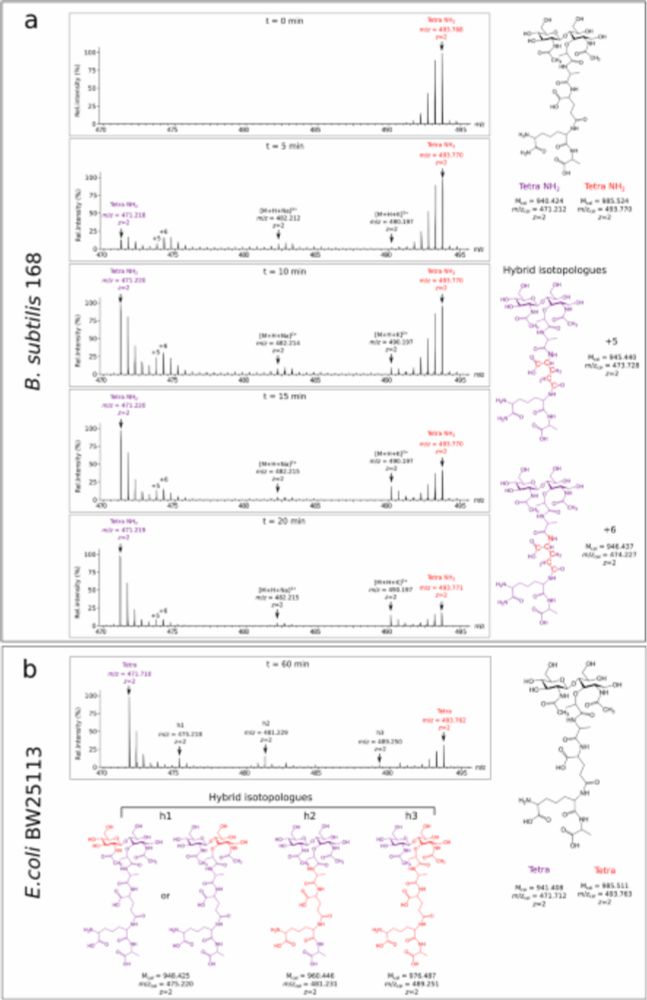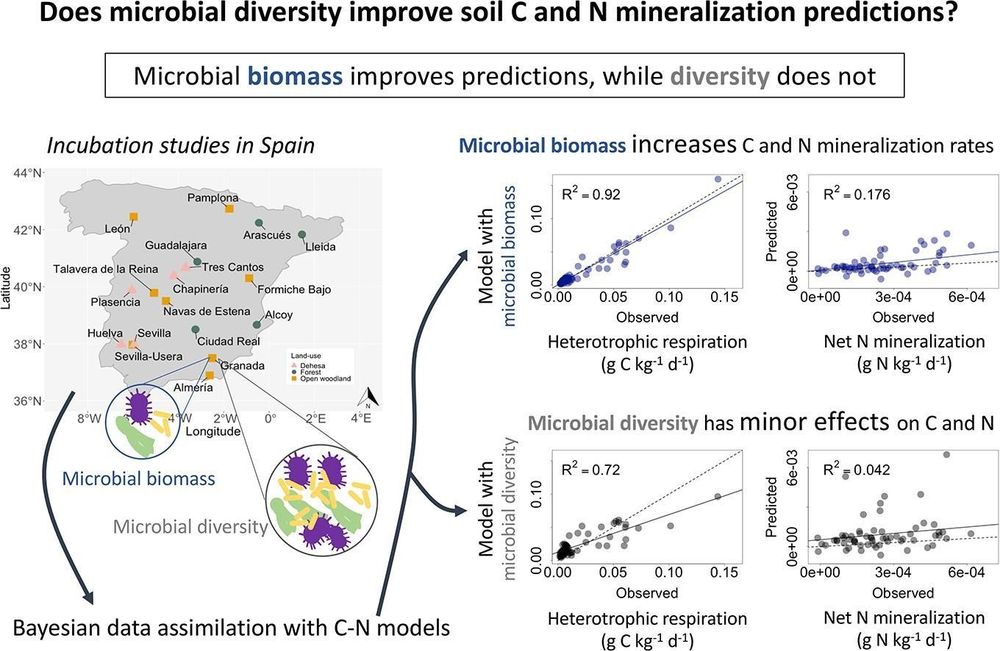
Soil microbial carbon metabolism | Extracellular polysaccharides | Stable isotope | Mass spectrometry
Glycosylation, the enzymatic addition of carbohydrate moieties to proteins, is essential for immune recognition, protein folding, and disease progression. The structural… #MassSpectromRev #MassSpecRSS

Glycosylation, the enzymatic addition of carbohydrate moieties to proteins, is essential for immune recognition, protein folding, and disease progression. The structural… #MassSpectromRev #MassSpecRSS
www.fungalecologylab.com

www.fungalecologylab.com
Soil microbial life history strategies covary with ecosystem multifunctionality across aridity gradients
www.pnas.org/doi/10.1073/...
Led by @BioFunLab CSC student Tao Zhou
@irnase.bsky.social @csic.es @csicandalextrem.bsky.social

Soil microbial life history strategies covary with ecosystem multifunctionality across aridity gradients
www.pnas.org/doi/10.1073/...
Led by @BioFunLab CSC student Tao Zhou
@irnase.bsky.social @csic.es @csicandalextrem.bsky.social
go.nature.com/46QHIZk

go.nature.com/46QHIZk

Microbes rock 🎸🤘 with sulfide and iron minerals
I am very excited to share our recent study, which describes a previously unknown microbial energy metabolism ⚡⚡⚡🦠🧫⚡⚡⚡
🆕 Microbial iron oxide respiration coupled to sulfide oxidation - MISO
www.nature.com/articles/s41...

Microbes rock 🎸🤘 with sulfide and iron minerals
I am very excited to share our recent study, which describes a previously unknown microbial energy metabolism ⚡⚡⚡🦠🧫⚡⚡⚡
🆕 Microbial iron oxide respiration coupled to sulfide oxidation - MISO
www.nature.com/articles/s41...

#microbiology #soil #archaea #ammonia
@isme-microbes.bsky.social
academic.oup.com/ismecommun/a...

#microbiology #soil #archaea #ammonia
@isme-microbes.bsky.social
academic.oup.com/ismecommun/a...
go.nature.com/3IqdJzd

go.nature.com/3IqdJzd
-in @natcomms.nature.com
www.nature.com/articles/s41...

-in @natcomms.nature.com
www.nature.com/articles/s41...
At Environmental Microbiology, I am commissioning a series of Perspectives exploring that question. Excited to share them in the 🧵 below
The series is open, so do get in touch if you'd like to propose a new contribution!
At Environmental Microbiology, I am commissioning a series of Perspectives exploring that question. Excited to share them in the 🧵 below
The series is open, so do get in touch if you'd like to propose a new contribution!

Join us at the Division of Environmental Geosciences (@edge-vienna.bsky.social) as Full Professor of ENVIRONMENTAL BIOGEOCHEMISTRY OF METALS. Collaborate across a leading institution in microbiome science and environmental research.
🔗 Learn more and apply: tinyurl.com/47bev45k

Join us at the Division of Environmental Geosciences (@edge-vienna.bsky.social) as Full Professor of ENVIRONMENTAL BIOGEOCHEMISTRY OF METALS. Collaborate across a leading institution in microbiome science and environmental research.
🔗 Learn more and apply: tinyurl.com/47bev45k
Join us at the Division of Terrestrial Ecosystem Research (@ter-cemess.bsky.social) as Full Professor of SOIL ECOSYSTEMS AND GLOBAL CHANGE. Collaborate across a leading institution in microbiome science and environmental research.
🔗 Learn more: cemess.univie.ac.at/news/detail-...

Join us at the Division of Terrestrial Ecosystem Research (@ter-cemess.bsky.social) as Full Professor of SOIL ECOSYSTEMS AND GLOBAL CHANGE. Collaborate across a leading institution in microbiome science and environmental research.
🔗 Learn more: cemess.univie.ac.at/news/detail-...
@IPSL_outreach

@IPSL_outreach

Learn more in a new #SciencePerspective: scim.ag/44y3iC6

Learn more in a new #SciencePerspective: scim.ag/44y3iC6
-in NPJ Biofilms and Microbiomes by David Ranava et al from Northwestern University / Mee-Ngan Yap, Arthur Prindle
www.nature.com/articles/s41...

-in NPJ Biofilms and Microbiomes by David Ranava et al from Northwestern University / Mee-Ngan Yap, Arthur Prindle
www.nature.com/articles/s41...




Plant microbiomes feel the heat! 🦠🌱🌡️
A perspective on how plan microbial communities are affected by the rising temperatures.
www.science.org/doi/10.1126/...

Plant microbiomes feel the heat! 🦠🌱🌡️
A perspective on how plan microbial communities are affected by the rising temperatures.
www.science.org/doi/10.1126/...
#Microsky #ERCAdG @erc.europa.eu @fwf-at.bsky.social

#Microsky #ERCAdG @erc.europa.eu @fwf-at.bsky.social
Enhanced surface colonisation and competition during bacterial adaptation to a fungus
www.nature.com/articles/s41...

Enhanced surface colonisation and competition during bacterial adaptation to a fungus
www.nature.com/articles/s41...
www.nature.com/articles/s41...

www.nature.com/articles/s41...
#ISMEJournal from @carahaney.bsky.social
with @geiselbiofilm.bsky.social
academic.oup.com/ismej/advanc...

#ISMEJournal from @carahaney.bsky.social
with @geiselbiofilm.bsky.social
academic.oup.com/ismej/advanc...


